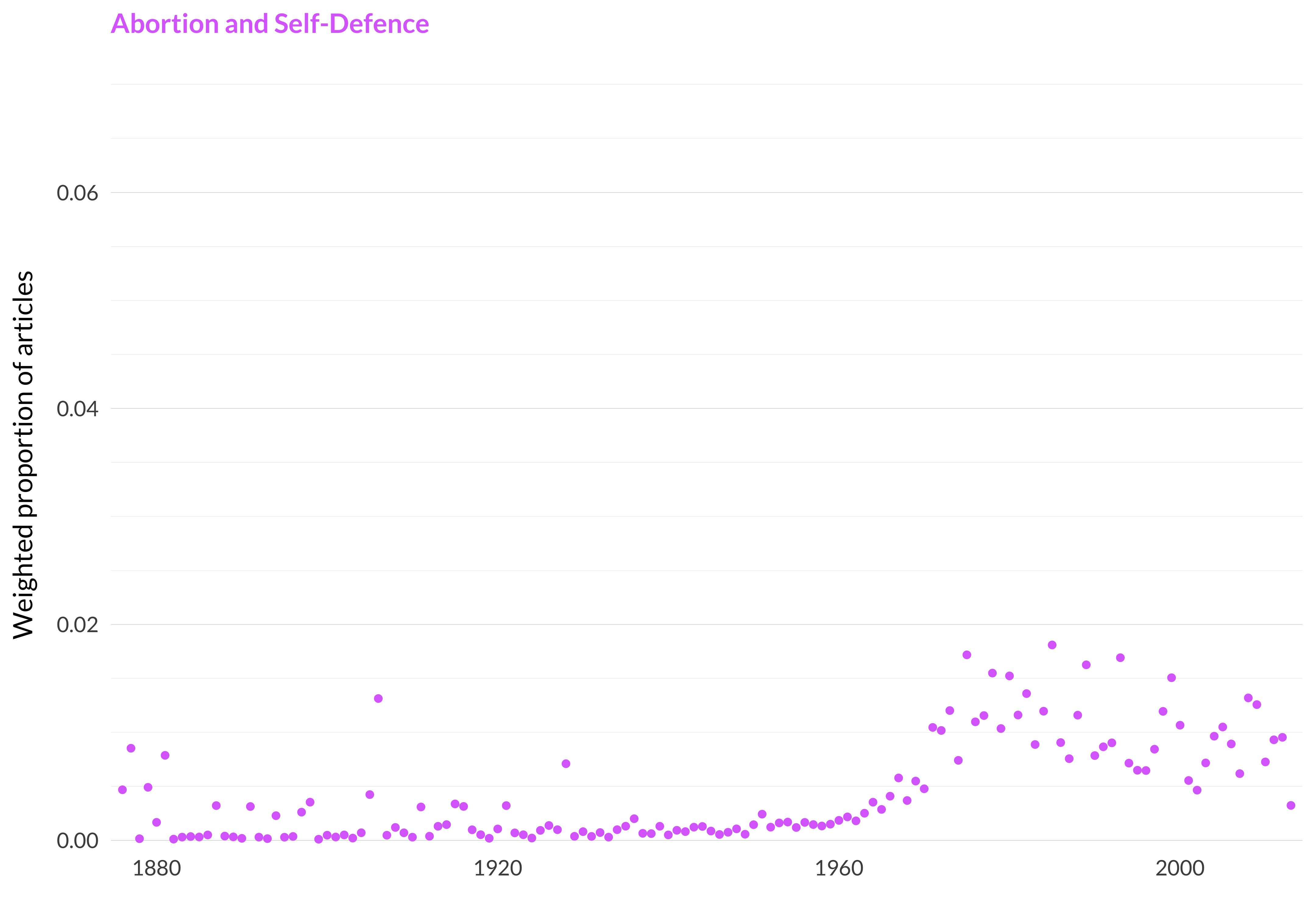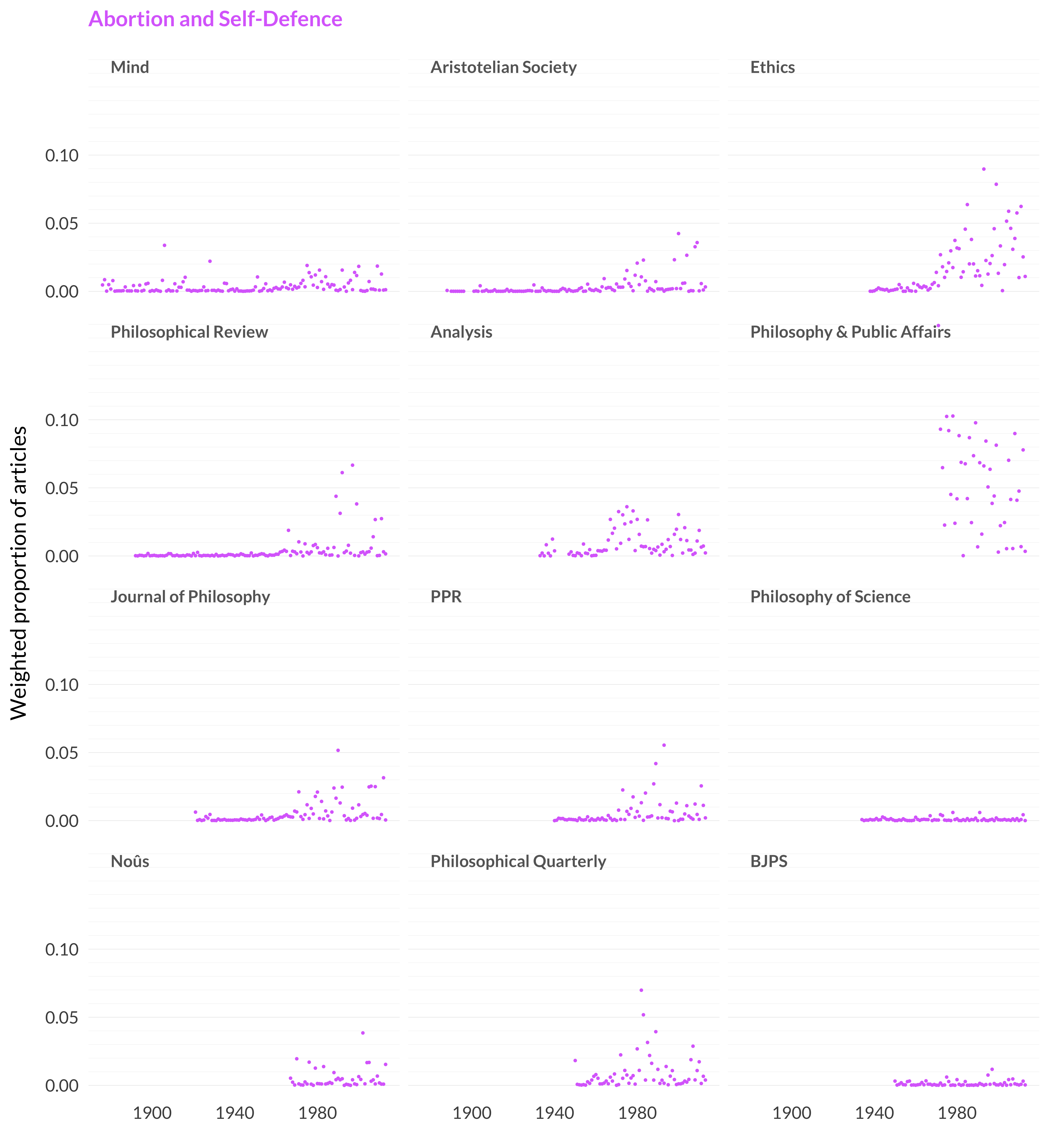2.71 Abortion and Self-Defence
Category: Ethics
Keywords: fetus, killing, kill, abortion, killed, suicide, death, thomson, dead, innocent, victim, harm, permissible, save, die
Number of Articles: 256
Percentage of Total: 0.8%
Rank: 62nd
Weighted Number of Articles: 209.3
Percentage of Total: 0.7%
Rank: 82nd
Mean Publication Year: 1987.7
Weighted Mean Publication Year: 1984.9
Median Publication Year: 1988
Modal Publication Year: 1975
Topic with Most Overlap: Ordinary Language (0.0538)
Topic this Overlaps Most With: Population Ethics (0.0235)
Topic with Least Overlap: Hume (0.00019)
Topic this Overlaps Least With: Mathematics (3e-04)

Figure 2.165: Abortion and self-defence.

Figure 2.166: Abortion and self-defence articles in each journal.
Comments
Most model runs I did ended up with the counterpart of this topic being much larger. Usually one of two things happened.
One was that there was a topic that was really based around the inaugural issue of Philosophy and Public Affairs, and had both “A Defense of Abortion” and “Famine, Affluence and Morality” as cornerstones. That didn’t happen here, as “Famine, Affluence and Morality”, and the many papers it inspired, are put in with population ethics.
The other was that there was a topic that included everything that related to self-defense. And while this topic has some self-defense articles, it doesn’t have many. There is only one article by Michael Otsuka, two by Jonathan Quong, only one directly on self-defense by Jeff McMahan, and none by Seth Lazar. Self-defense ends up getting a bit split in this model. Some of it is here, some under responsibility, and some under war.
The happy consequence of this is that we get a topic that really is all about Judith Jarvis Thomson’s work. It’s not about all of her work of course—that covers ever so many fields.
But this topic does include many of the papers on two of her signature contributions: her innovative defense of abortion and her discussions of the trolley problem. Her original paper on the trolley problem is not in this study, since it wasn’t published in one of the twelve journals I’m looking at. But a lot of papers that follow up on it, including Thomson’s own second thoughts in “Turning the Trolley” are here.
There is a very natural sense in which this topic is centered around Thomson’s work. I don’t have a formal analysis of this concept of “centering” I just used. But most topics are not centered around any one philosophers work. There are topics based around Marx, Kant, Russell, Hume, Frege, Frankfurt and Parfit, as well as two that are arguably centered around Rawls—Liberal Democracy and Egalitarianism. But there is no other case, I think, where any female philosopher is as central to as big an area of philosophical research as we see in this case. There are some women, such as Margaret MacDonald, who were important influences on the journals as editors. But I’m not sure any woman was more influential on the journals as a writer than Thomson.